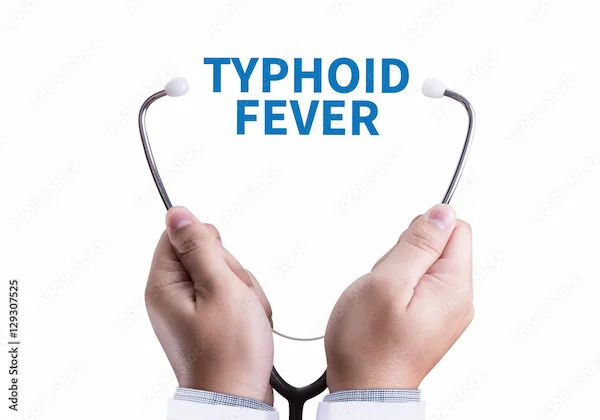Blood Transfusion: A Comprehensive Guide to Procedure, Risks, and Importance
Learn about blood transfusion, why it is done, the procedure, the risks, and its importance. Also, learn about the types of blood transfusion and its alternatives.

Written by Dr.Sonia Bhatt
Last updated on 3rd Jul, 2025

A blood transfusion is a medical procedure that involves giving a patient blood or blood products through an intravenous (IV) line, meaning within a vein. It is a common and safe procedure that can help treat several medical conditions involving significant blood loss, anaemia, and bleeding disorders. It can also provide support during surgeries, childbirth, and other medical procedures.
Importance of Blood Transfusion
Blood transfusions are a life-saving treatment that can replace blood lost due to injury or surgery and treat certain health conditions.
Blood transfusions are important because:
It can replace blood loss: Transfusions can replace blood lost during surgery or injury.
It can treat blood disorders: Transfusions can treat conditions that prevent the body from making blood correctly, such as thalassaemia, sickle cell disease, and aplastic anaemia.
It can prevent complications: Transfusions can prevent complications due to blood loss.
It can treat blood infections: Transfusions can help with serious blood infections when other methods fail.
Why are Blood Transfusions done?
People receive blood transfusions for many reasons, such as injury, surgery, disease and bleeding disorders.
Blood has several components, including:
Red blood cells that carry oxygen and help remove waste products.
White blood cells that help the body fight infections.
Platelets that help the blood clot properly.
Plasma, which is the liquid part of the blood.
A transfusion provides the part or parts of blood one needs, with red blood cells being the most commonly transfused. Individuals can also receive whole blood, containing all the parts, but such transfusions are not common.
Types of Blood Transfusion
There are four common types of blood transfusions, according to the American Red Cross:
1. Red Blood Cell Transfusions
Individuals who experience blood loss, have anaemia (such as iron deficiency anaemia), or have a blood disorder may receive a red blood cell transfusion.
2. Whole Blood Transfusions
Individuals who experience a severe traumatic haemorrhage and require red blood cells, white blood cells and platelets may receive a whole blood transfusion.
3. Platelet Transfusions
Individuals with lower platelet counts, such as those from chemotherapy or a platelet disorder, may receive a platelet transfusion.
4. Plasma Transfusions
Plasma contains proteins that are essential for health. Individuals who experience severe burns, infections, or liver failure may receive a plasma transfusion.
Before a blood transfusion, a healthcare professional will remove white blood cells from the blood because they can carry viruses. They may then transfuse white blood cells called granulocytes to help a person recover from an infection that has not responded to antibiotics. They may also collect granulocytes using a process called apheresis.
Indications for Blood Transfusion
Below are a few indications for blood transfusion:
Severe Anaemia: Chronic diseases can cause severe anaemia, reducing oxygen transport. However, transfusion helps restore normal function.
Acute Blood Loss: From trauma or surgery, transfusions help where rapid replacement is critical to prevent shock and organ failure.
Coagulation Deficiencies: These include haemophilia, where transfusion provides necessary clotting factors to prevent excessive bleeding.
Platelet Disorders: In conditions like thrombocytopenia, transfusion helps maintain safe platelet levels and prevent haemorrhages.
Blood Typing and Compatibility
Blood typing and compatibility testing play a crucial role in ensuring safe blood transfusions. The test ensures that the recipient’s blood type matches the donor’s to prevent harmful reactions. This involves determining ABO and Rh blood types and performing cross-matching to confirm compatibility.
Below is the breakdown:
1. ABO Blood Typing
This identifies the blood type as A, B, AB or O based on the presence or absence of specific antigens (proteins) on red blood cells.
2. Rh Factor
This helps in determining whether the blood is positive (+) or negative (-) based on the presence or absence of the RhD antigen.
3. Compatibility
Type A blood can receive type A or O blood.
Type B blood can receive type B or O blood.
Type O blood can only receive type O blood (universal donor for red blood cells).
Type AB blood can receive all blood types (universal recipient).
Rh-negative individuals can only receive Rh-negative blood except in emergencies.
Rh-positive individuals can receive both Rh-positive and Rh-negative blood.
4. Cross-matching
This test ensures that the donor blood is compatible with the recipient’s blood by mixing a small amount of the recipient’s serum with the donor’s red blood cells.
Procedure for Blood Transfusion
A blood transfusion is a procedure that involves receiving blood from a donor through a thin plastic tube inserted into a vein. It can be performed in a clinic or hospital.
The procedure steps for blood transfusion include:
1. Pre-Transfusion Testing
This is a series of steps to ensure a patient’s blood and the blood they receive are compatible. The procedure involves blood typing, cross-matching, and screening for infections.
2. Administration Process
In this process, the blood is administered intravenously under sterile conditions, ensuring precise and safe delivery.
3. Monitoring During and After Transfusion
In this step, vital signs are monitored throughout to detect any adverse reactions promptly.
Risks Associated with Blood Transfusion
Blood transfusions are generally considered safe, but there can be some risk of complications. Mild and rarely severe complications can occur during the transfusion, while a few reactions can take several days to appear. More common reactions to blood transfusions include allergic reactions that might cause itching, hives, or fever.
Some complications that can occur include:
1. Bloodborne Infections (BBI)
This infection is caused by a microorganism, such as a virus or bacteria, present in the blood. Hence, blood banks screen donors and test the donated blood to reduce the risk of transfusion-related infections. So, infections such as HIV or hepatitis B or C are rare.
2. Acute Immune Haemolytic Reaction
If the donor type isn’t a good match, the immune system can attack the transfused red blood cells. The attacked cells release a substance into the blood that can harm the kidneys.
3. Graft-versus-host Disease
In this condition, transfused white blood cells can attack the bone marrow. Usually fatal, it is more likely to affect those with severely weakened immune systems, such as those being treated for leukaemia or lymphoma. To prevent this, some centres can irradiate (treat with radiation) blood components for patients receiving intensive chemotherapy, undergoing stem cell transplants, or having an impaired immune system. Irradiation helps prevent white cells from attacking.
4. Delayed Haemolytic Reaction
This is similar to an acute immune haemolytic reaction, which may occur more slowly. It can take 1–4 weeks to notice a decrease in red blood cell levels.
Frequent transfusions can also lead to iron overload, necessitating chelation therapy.
Alternatives to Blood Transfusion
Below are a few alternatives to blood transfusion:
1. Autologous Blood Donation
In this, the patients donate their own blood before surgery, ensuring perfect compatibility.
2. Erythropoietin Stimulating Agents
This boosts the red cell production of the body, reducing the need for transfusion.
3. Blood Substitutes
Synthetic blood research is advancing, offering potential future alternatives. However, research is ongoing, and further studies are needed to determine the safety and efficacy of these substances.
How Long Does it Take to Recover from a Blood Transfusion?
After the transfusion, the healthcare provider may recommend that the patient rest for 24 to 48 hours. Patients may also need to call and schedule a follow-up visit with the healthcare provider.
Conclusion
Blood transfusion is a life-saving procedure that plays a crucial role in modern medicine, from treating severe anaemia and blood disorders to supporting surgeries and trauma care. However, to avoid complications, it is essential to ensure proper screening, compatibility, and meticulous procedures.
Consult Top General Physician
Consult Top General Physician

Dr Syed Mateen Pasha
General Physician
2 Years • MBBS
Bengaluru
PRESTIGE SHANTHINIKETAN - SOCIETY CLINIC, Bengaluru

Dr. Syed Ismail Ali
General Practitioner
7 Years • MBBS
Hyderabad
Apollo 24|7 Clinic, Hyderabad

Dr. Sandhya Chandel
General Physician/ Internal Medicine Specialist
16 Years • MBBS, MD (Int. Med.), IDCCM
Bilaspur
Apollo Hospitals Seepat Road, Bilaspur
(100+ Patients)

Dr. Mohamed Azeem
General Physician/ Internal Medicine Specialist
2 Years • MBBS,MD(Internal Medicine) CCEBDM
Karaikudi
Apollo Hospitals Karaikudi, Karaikudi

Dr. Bhukya Pavan Kalyan
General Physician
5 Years • MBBS DNB Paediatrics
Bengaluru
PRESTIGE SHANTHINIKETAN - SOCIETY CLINIC, Bengaluru




